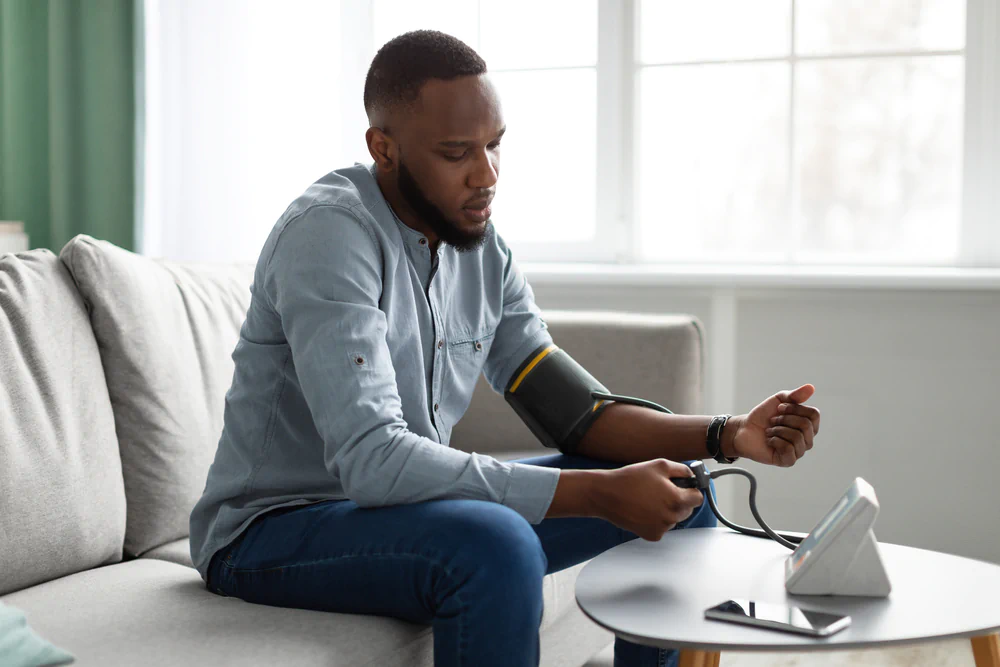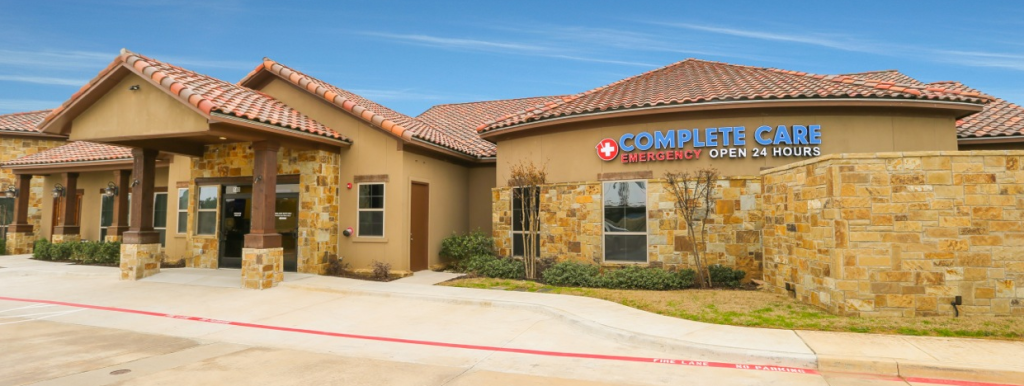
Your blood pressure tells the story of how hard your heart is working to pump blood through your body, and keeping it in a healthy range is vital for your overall well-being. Understanding what a normal blood pressure is for your age can help you take better care of your heart and catch potential problems early enough to intervene — but what is considered a normal blood pressure?
What is the normal blood pressure by age?
Generally, doctors aim for blood pressure readings of less than 120/80 mmHg for all adults, regardless of age. However, since blood pressure does naturally increase with age, you can use the blood pressure chart below to reference the “normal” numbers specific to your age group.
| Age Group | Normal Systolic (top number) | Normal Diastolic (bottom number) |
| Newborn to 1 month | 45-80 mm Hg | 30-55 mm Hg |
| 1-12 months | 65-100 mm Hg | 35-65 mm Hg |
| 1-5 years | 80-115 mm Hg | 55-80 mm Hg |
| 6-13 years | 80-120 mm Hg | 45-80 mm Hg |
| 14-18 years | 90-120 mm Hg | 50-80 mm Hg |
| 19-40 years | 95-135 mm Hg | 60-80 mm Hg |
| 41-60 years | 95-145 mm Hg | 70-90 mm Hg |
| 61 years and older | 95-145 mm Hg | 70-90 mm Hg |
| General Guidelines | ||
| Normal | 120-129 mmHg | Less than 80 mmHg |
| Elevated | 130-139 mmHg | 80-89 mmHg |
| High (Stage 1) | 140+ mmHg | 90+ mmHg |
If you’re experiencing symptoms of high blood pressure — such as severe headaches, chest pain, difficulty breathing, or dizziness — or if you’re concerned about consistently elevated readings, don’t hesitate to head into a Complete Care freestanding ER location. All of our facilities are open 24/7 and are equipped with advanced monitoring technology and emergency-trained physicians.
For life-threatening situations, please call 911.
Understanding blood pressure readings
Your blood pressure reading consists of two measurements that work together to paint a complete picture of your heart’s performance and your overall circulatory health: systolic and diastolic blood pressure.
The systolic blood pressure is the top number in your reading, and it shows how much pressure your blood is putting on your artery walls when your heart contracts and pumps blood through your body. This is the highest pressure your cardiovascular system reaches with each heartbeat.
The diastolic blood pressure is the bottom number, which measures the pressure in your arteries when your heart is relaxed and refilling with blood between beats. This is the lowest pressure in your circulatory system and is always present, even when your heart is at rest.
Is it worse to have a high top or bottom number for blood pressure?
While both numbers are important for understanding your heart health, a high systolic number (the top number in a reading) means your heart is working harder to pump blood, which can be a sign that your arteries are becoming stiff. This raises your risk for a hypertensive crisis, heart attacks, strokes, and other heart-related problems.
Still, high diastolic pressure (the bottom number) matters too — it can mean your blood vessels aren’t relaxing the way they should between beats. Your doctor will look at both numbers, along with your overall health, to assess your heart risk and decide on the right treatment.
Learn more: Is high blood pressure a sign of a heart attack?
What are the symptoms of high blood pressure?
High blood pressure is often called the “silent killer” because most people don’t feel any symptoms when they have it. You could have high blood pressure for years without knowing it, which is why getting your blood pressure checked regularly is so important. Despite its often silent nature, when blood pressure gets very high or reaches dangerous levels, your body may start showing warning signs that you shouldn’t ignore.
Common symptoms of high blood pressure may include:
- Mild to moderate headaches, particularly in the back of the head
- Dizziness or lightheadedness, especially when standing up quickly
- Blurred vision or other changes in eyesight
- Fatigue or weakness that interferes with daily activities
- Nosebleeds that occur frequently or are difficult to stop
- Flushing of the face or neck
- Ringing in the ears (tinnitus)
If you experience any combination of these symptoms or are concerned that you do not have normal blood pressure for adults, head into a Complete Care emergency room immediately. While these symptoms can be caused by other conditions, it’s best to confirm whether you’re in a good blood pressure range rather than waiting for symptoms to appear.
How to correctly monitor your blood pressure at home
Home blood pressure monitoring is an excellent way to keep track of your cardiovascular health between doctor visits and get a more complete picture of how your blood pressure changes throughout the day. Here’s how to check for a healthy blood pressure reading at home:
- Choose the right equipment: Select an automatic, digital blood pressure monitor with an appropriately sized cuff. Look for monitors that have been validated for accuracy by medical organizations, and avoid wrist or finger monitors as they tend to be less reliable.
- Prepare for accurate readings: Before taking your blood pressure, avoid caffeine, exercise, and smoking for at least 30 minutes. Use the bathroom if needed, as a full bladder can affect your reading. Sit quietly for 5 minutes before measuring, and find a comfortable chair with back support. Remove any tight clothing from your upper arm, and make sure you’re in a quiet, comfortable environment where you won’t be interrupted.
- Take your reading properly: Sit with both feet flat on the floor, legs uncrossed, and your back supported. Rest your arm on a table or armrest so that the cuff is at the same level as your heart. Place the cuff on your bare upper arm, about one inch above your elbow crease. Press the start button and remain still and quiet while the cuff inflates and deflates. Don’t talk or move during the measurement, as this can affect accuracy.
- Monitor at the right times: Take your blood pressure at the same times each day, ideally in the morning before taking medications and in the evening before dinner. Always take two readings about one minute apart and record both numbers.
- Record and share your results: Keep a log of your readings, including the date, time, and any relevant notes about how you were feeling or what activities you’d done recently. Bring your log or device to medical appointments so your healthcare provider can review your patterns and make informed decisions about your treatment plan.
Keep in mind that single readings can vary throughout the day, so focus on patterns and trends rather than individual measurements. If you notice consistently high readings or sudden changes in your numbers, don’t hesitate to contact your healthcare provider for guidance.
When to go to the ER for high blood pressure
Knowing when to go to the ER for high blood pressure isn’t always clear-cut, as blood pressure can fluctuate throughout the day due to stress, activity, or other factors.
Emergency situations requiring immediate medical attention include:
- Blood pressure readings of 180/120 mmHg or higher with any symptoms
- Severe chest pain or pressure, especially left side chest pain that radiates to the arm, neck, or jaw
- Sudden, severe headache unlike any you’ve experienced before
- Shortness of breath or difficulty breathing that comes on suddenly
- Severe nausea and vomiting combined with high blood pressure readings
- Vision changes such as sudden blurred vision, double vision, or temporary vision loss
Remember that blood pressure can spike temporarily due to pain, stress, or anxiety, so a single high reading without symptoms may not constitute an emergency. However, if you’re experiencing any of the symptoms listed above along with elevated blood pressure, don’t hesitate to seek immediate medical care.
Get immediate blood pressure care at Complete Care’s convenient locations
Don’t let normal blood pressure concerns go unchecked or wait until a crisis develops. With convenient locations throughout Austin, Corpus Christi, Dallas/Fort Worth, East Texas, Lubbock, San Antonio, and Colorado Springs, Complete Care ensures that expert blood pressure care is never far away.
Our facilities are open 24/7, equipped with state-of-the-art monitoring equipment, and staffed by experienced emergency medicine physicians who understand the urgency that blood pressure emergencies can present. Unlike traditional hospital emergency rooms, our freestanding locations offer shorter wait times and a more comfortable environment while maintaining the same high level of emergency medical care.
Whether you need immediate evaluation for concerning symptoms, emergency treatment for dangerously high readings, or expert guidance on managing your cardiovascular health, Complete Care is here to provide the comprehensive, compassionate care you deserve. Your heart health is too important to delay — visit your nearest Complete Care location today.
More Helpful Articles by Complete Care:
- Signs of Dehydration in Kids: When to Bring Them to the ER
- Is There a Measles Outbreak in Texas?
- What Does Your Stomach Pain Location Mean?
- Signs of Diverticulitis
- Your Guide to Burn Blister Care
